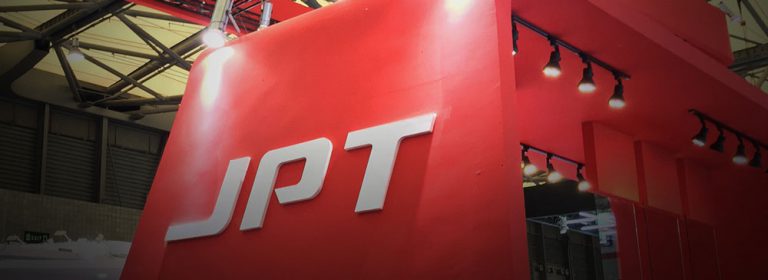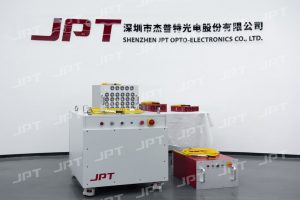Table of Contents
Laser Safety: Risks, Hazards
The application of laser is broad. And therefore its impact can be realized everywhere. Today, it is hard to see any industry which is not directly or indirectly dependent on lasers. It has also raised the safety concern. Understanding the possible risk caused by different lasers and type of hazards involved is of paramount importance.
Risk factors are highly dependent and one should be properly aware of the potential risk involved in typical laser that is going to be used for particular application. Some common risk factors are illustrated herewith as a guide that is applicable to almost all kind of lasers sources:
Laser light is different from other light source that we are used to see in our daily life. It is created by stimulated emission and therefore it is highly directional, very less divergent, bright light source. If we are exposed to such light, it can damage our eyes and skin.
Invisible wavelength are particular dangerous as we are unable to sense them. Also a long term exposure of low powered laser beam can cause long term damage. It should be made sure that beams are properly controlled by enclosures, beam stops etc. Avoid unnecessary reflection in beam path as well as wearing any reflecting item.
Depending upon the class of lasers the laser safety standards can be defined. An indicative guideline is given herewith:
Here we refer the standard laser guidelines suggested in ANSI Z136.1. Based on the level of hazardous laser has been classified into the following category:
- Class 1 Laser (Safe and not hazardous)
- Class 2 Laser (< 2mW, hazardous if eye exposed to laser for more than 0.25 sec.)
- Class 1M Laser (hazardous only when viewed through some optical instrument such as telescope)
- Class 2M Laser (less hazardous to unaided eyes but injurious if viewed through optical instruments)
- Class 3R Laser (dangerous if directly came into contact or through specular reflection. Although the level of injury is not very serious. Also there is no danger due to diffused reflection)
- Class 3B Laser (They can offer the power level upto 500 mW and can be dangerous similar to Class 3R laser in direct and specular reflection case. Danger due to diffused reflection depends upon the level of laser power)
- Class 4 Laser (These lasers with power range greater than 500 mW are most dangerous in all classes. There is a risk of eye or skin injury in all direct, specular or diffused reflection condition as well as due to airborne contaminants. Always beam enclosure should be used to reduce the possibility of any danger).
Particular Hazardous Situations of High Voltage Power
Class 4 lasers are considered to be most dangerous. They are high power lasers with their output power range more than 500 mW. Direct exposure to the laser beam, or beam reflections (specular or diffuse) are hazardous to our eyes and skin. A focused beam of Class 4 laser can produce very high power (2W/cm2) that is considered to be ignition hazard.
In addition, these lasers can create hazardous airborne contaminants and have a potentially lethal high voltage powersupply. Always enclose the entire laser beam path, if possible, or enclose most of the beam path to reduce the potential hazards.

Critical Questions to Ask Before Buying a Laser Source
Laser system can pose danger in many ways. Therefore, it becomes important to verify right at the time of purchasing if it satisfy certain norms or not. Many manufacturers may not follow all the guidelines important for safety purpose. In this regard JPT lasers can be very efficient and reliable. JPT provides proper training making aware of laser safety.
They are continuously attached with their customers and they offer dedicated after-sale services. JPT lasers can be customized according to the safety level required by customers. The appealing feature of these lasers is their flexibility that they can always be reconfigured if customer makes any new demand. They offer wide power range that may be chosen according to one’s specific demands.
Finding the answer for the following laser safety checklist before buying a laser source may serve as a perfect assessment to make sure that everything is in order:
1. Does the laser source contain all the safety labels and warning signs?
Laser source must be labeled with warning signs and classification labels for safe operations. These warning sign must satisfy the international safety standards like ANSI standard and ISO 3864-1 and ISO 3864-2 standard.
2. Does laser source embedded in sealed enclosures?
Enclosure must be able to prevent access to the area where laser beam may be hazardous to eyes and skin. These enclosures will keep laser source off if access panels or doors are open. Considering about materials, metallic enclosures should be preferred over plastic materials. The enclosure thickness should be enough to prevent the possible laser penetration.
3. Does open air safety enclosure satisfy the international safety standards?
It is always not possible to embed laser source into sealed enclosure especially when the complete system is too big. In that case, open air safety enclosures can be used. In case of open air safety enclosure, the main focus is on that zone where radiation levels can be more than maximum permissible exposure (MPE). Special controlling measures like using proximity safety sensor (PSS), blocking the specular reflections can be used.
4. Does laser has warning mechanism?
In the absence of enclosures, Class 4 lasers are required to have some warning mechanism that must be clearly visible. As an example, a flash light in the entrance can be used to indicate when the laser system is on.
5. Does laser source contain exclusive safety device?
Class 4 laser are categorized as most dangerous laser. These laser sources must include dedicated safety devices such as key switch or interlock system. The purpose of key switch is to keep power supply in on or off position and therefore, to control the access to laser system. Interlock system is a circuit which is complete as long as all the safety measures are met. If not, the interlock system will be in broken state.
6. Does laser have high temperature alarming system?
Although, it is not a mandatory feature and all manufacturers may not include it in laser system but it is very useful that is a must in high combustible experiments.
Best Laser Source Choice - JPT MOPA Fiber Laser
JPT offers a large variety of MOPA Fiber laser which has many distinctive advantages for plastic marking. For example
- JPT MOPA Fiber laser offers a great flexibility and customization. Pulse repetition frequency (PRF), pulse duration, pulse shape and their peak power all these important parameters can easily be changed in MOPA Fiber laser without changing the setup or operating principle of laser system.
- JPT MOPA Fiber offers efficient Laser beam power, beam quality and laser operation with relatively less power consumption.
- JPT MOPA Fiber laser creates reliable and long-lasting marking features. They are capable to create high contrast marking feature with negligible carbonization.
JPT M7 series high power MOPA fiber lasers show excellent laser performance with a high level of temporal pulse shaping controllability. The laser peak power can be well maintained by adjusting different combination parameters. The high output power has its advantages, especially in high-speed engraving applications.
Recommend Reading

You Will Never Believe Laser Technology Could be So Useful
Table of Contents Beginning: The Development and Current Status of the Laser Industry The laser industry has found wide acceptance across different industries since the

How to Choose a Suitable Laser Source – MOPA Series
As a tool, the laser has become a new favorite in the industrial age. Compared with other traditional processing methods, the laser has only a





